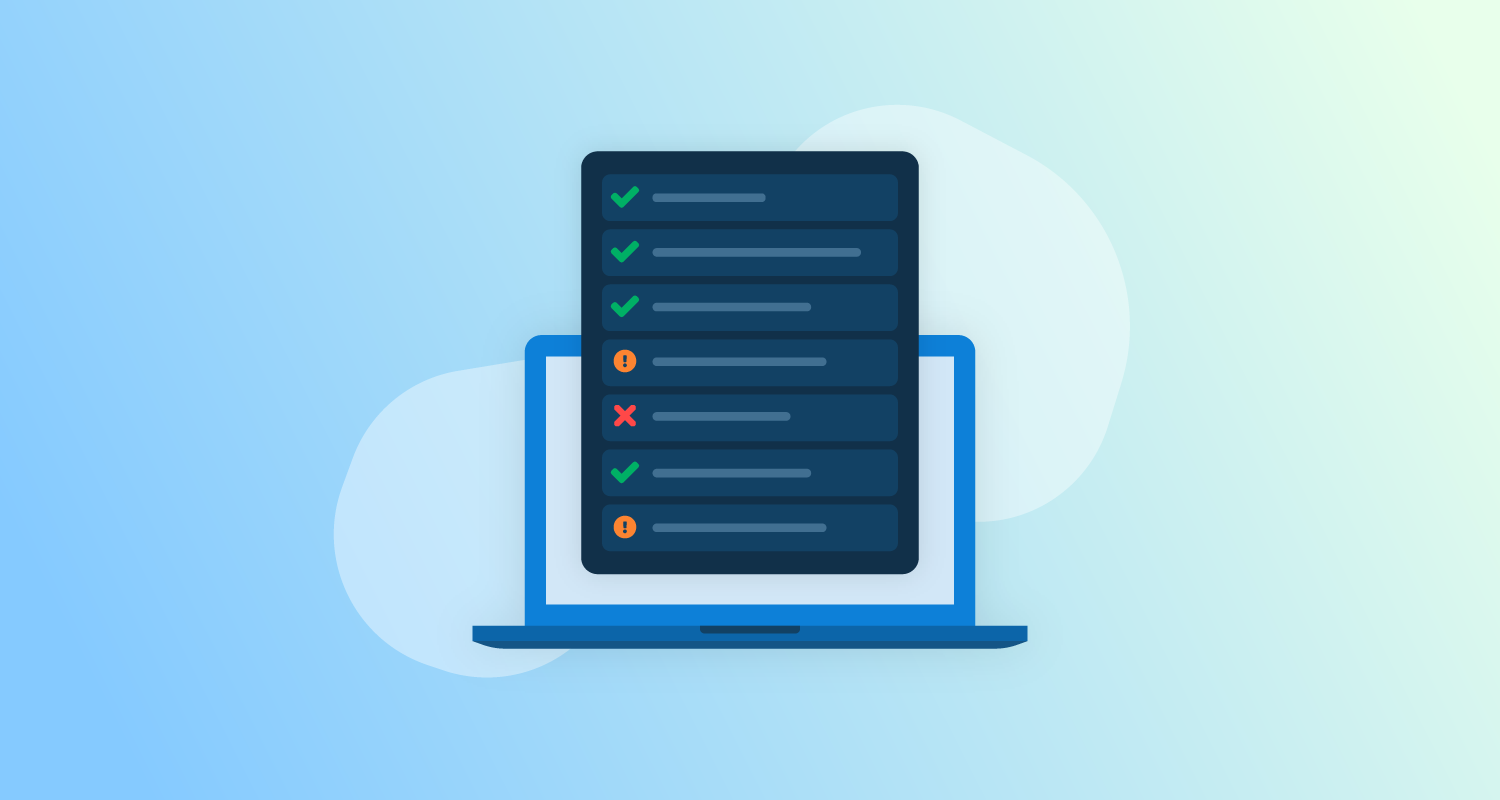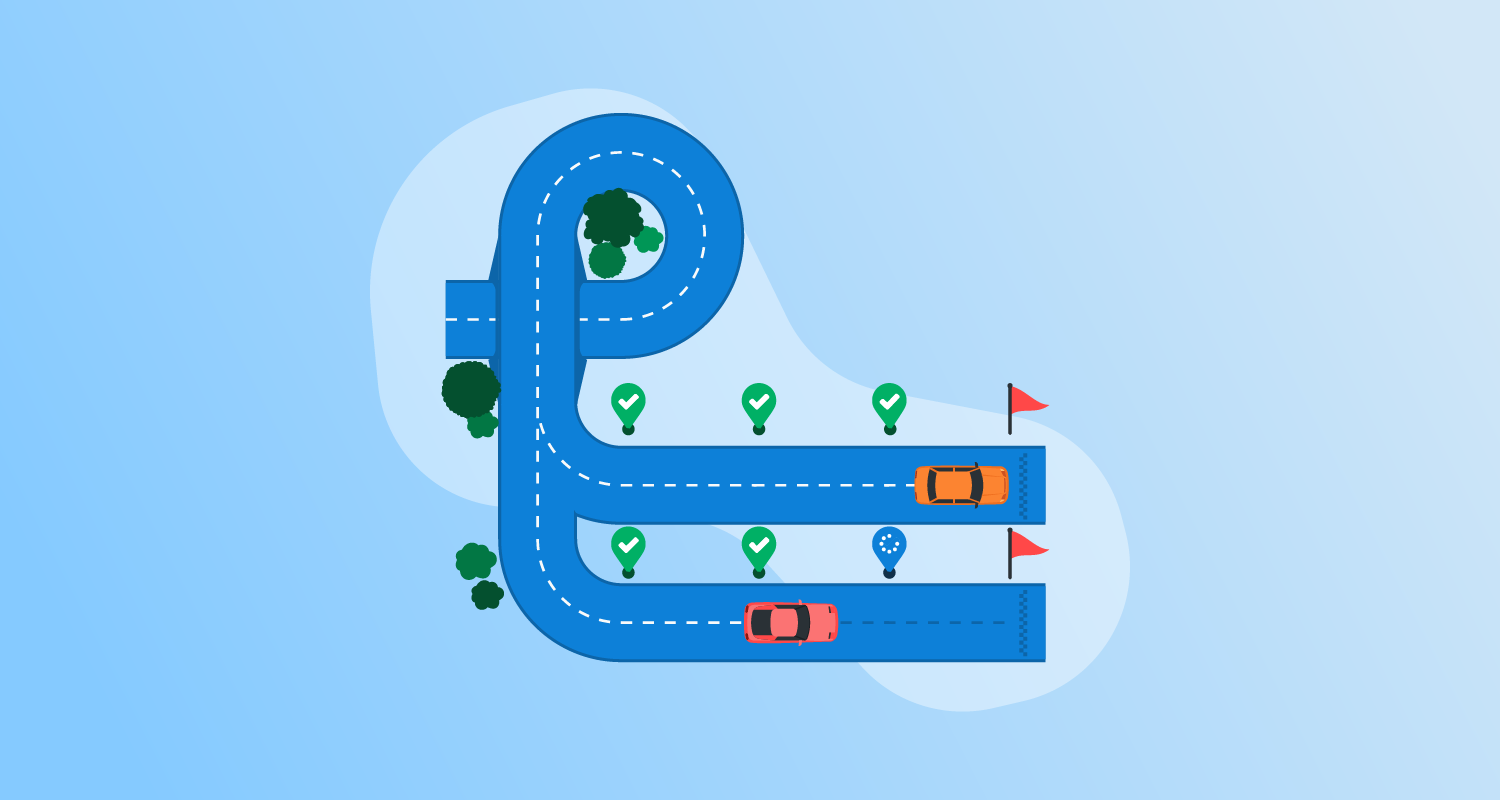What are blue/green deployments?
Blue/green deployment is a strategy for releasing software that reduces downtime by maintaining two identical environments. The “blue” environment runs the current application version, while the “green” is used for updates.
The green version is tested during deployment, and traffic is switched only when ready. This transition is seamless for users. In case of any issues, traffic can revert to the blue environment, ensuring stable operations.
Deploying through blue/green strategies allows teams to conduct thorough testing in a production environment before going live. The unused environment acts as a failback option, reducing the risk associated with new deployments. This method is especially useful for minimizing service disruptions.
When implementing blue/green deployment, it’s important to use CI/CD tools with strong blue/green deployment features. Octopus Deploy is the leading CI/CD solution with blue/green deployment capabilities. Learn more about Octopus Deploy.
This is part of a series of articles about software deployment.
How blue/green deployment works
Blue/green deployment operates by maintaining two identical environments—blue and green—where one serves live traffic while the other remains idle until a new version is deployed. The process unfolds in several steps:
- Prepare the green environment: The new application version is deployed to the green environment, which mirrors the blue environment in configuration and infrastructure.
- Test the green environment: Before switching traffic, thorough testing is conducted in the green environment to verify functionality, performance, and stability. This can include integration tests, load tests, and user acceptance testing.
- Switch traffic to green: Once validated, traffic is redirected from the blue environment to the green environment. This switch is typically managed via a load balancer or DNS update, ensuring a seamless transition without downtime.
- Monitor the deployment: After the switch, monitoring tools track system performance, error rates, and user experience to detect any issues. If problems arise, rollback mechanisms allow quick reversion to the blue environment.
- Decommission or repurpose blue: If no issues occur, the old blue environment can be repurposed for the next deployment or decommissioned to free up resources.
Challenges with blue/green deployments
Infrastructure and resource overhead
Blue/green deployment incurs additional infrastructure and resource costs, as maintaining dual environments requires duplicate resources. This increase requires an assessment of resource allocation to ensure economic feasibility and balanced load management.
Resource disparity can also emerge, challenging teams to ensure both environments mirror realistic user scenarios without fragmentation. Continuous monitoring and adjusting the strategy for cost efficiencies is vital.
Data synchronization issues
Data synchronization issues remain a significant challenge. Ensuring data consistency across environments during deployment transitions can be difficult, risking data discrepancies and loss. Strategies like real-time synchronization and distributed databases can overcome these hurdles.
These challenges require flexible software architectures to accommodate seamless data continuity across environments. Proper planning and verification are essential to confirm that users interact with up-to-date, reliable data irrespective of environment switches.
Complexity in environment management
Managing dual environments introduces complexity in updates, requiring meticulous synchronization of builds, configurations, and data. The operational overhead increases, complicating maintenance tasks and requiring advanced skill sets for effective management of parallel environments.
This complexity requires comprehensive tooling and monitoring solutions to orchestrate smooth transitions and ensure consistency. Mismanagement risks duplicated effort and configuration drift, requiring careful oversight.
Fundamental best practices for blue/green deployment
Organizations and developers should consider the following practices when implementing blue/green deployment.
1. Automate deployment processes
Automating deployments ensures consistency, reliability, and efficiency in blue/green deployment. It eliminates manual errors and reduces effort, allowing teams to focus on optimization rather than repetitive tasks. Automation tools simplify the environment-switching process, ensuring swift and accurate transitions.
By adopting deployment automation, organizations gain the capacity to scale operations efficiently. Automating deployment processes is indispensable for modern infrastructures.
2. Use infrastructure as code (IaC)
Infrastructure as code (IaC) ensures consistent environment configurations in blue/green deployment. IaC enables precise replication of infrastructure setups for both environments, enabling reliable deployment processes. This approach assists in maintaining parity, ensuring environments are always in sync.
By leveraging IaC, teams gain flexibility in managing and deploying infrastructure changes. Automated scripts ensure environments remain consistent with required specifications, allowing seamless traffic switching between blue and green environments.
3. Implement robust monitoring and alerting
Implementing comprehensive monitoring and alerting is essential for tracking performance metrics and identifying issues promptly. Using monitoring tools ensures that environments are fully operational and meet performance expectations. Robust alert systems notify teams of discrepancies, enabling swift corrective actions.
Effective monitoring boosts system reliability by ensuring issues are addressed before escalations. Alerts guide teams in maintaining uninterrupted service post-deployment, while proactive monitoring keeps systems running smoothly.
4. Gradual traffic shift strategies
Gradual traffic shifts provide controlled transition, minimizing risk during deployment. By incrementally moving traffic, any emerging issues can be detected early and addressed before a full cutover. This strategy affords flexibility, enabling back-off if necessary without significant disruption.
Using adaptive traffic shifting furthers service stability while reducing deployment impact. Phased rollouts enable feedback incorporation, ironing out potential issues across a smaller scope.
5. Plan for rollbacks and recovery
Planning effective rollback and recovery strategies is imperative for resilience. Deployments can fail; having plans enables swift restoration to stable states, minimizing downtime and disruption. Detailed rollback procedures ensure recovery from errors efficiently.
Reliable rollback measures differentiate operational resilience, curbing potential damage while protecting applications. This preparation instills confidence in release operations, promoting quicker responses to unforeseen issues.
6. Secure both environments
Ensuring security in both environments is vital, mitigating vulnerabilities throughout deployment. Applying best security practices uniformly across blue and green setups guards against breaches, protecting sensitive data and maintaining user trust amid transitions.
Comprehensive security auditing and patching enforce protections, while automated monitoring extends threat detection capabilities. With secure environments, teams adhere to industry standards.
Advanced blue/green deployment best practices
Here are some additional practices to help ensure effective deployment.
7. Use feature flags
Feature flags enable controlled deployment, allowing selective feature activation. This flexibility tests features in production without full rollout, improving control over exposure and feedback collection. Feature flags support gradual deployment, reducing risk and improving control over feature availability.
Leveraging feature flags maximizes agility, providing finer granularity over deployed features. Toggles enable testing and validation in live environments, making corrective action easier if issues arise.
8. Incorporate chaos engineering
Incorporating chaos engineering experiments strengthens blue/green deployment reliability. By introducing controlled disruptions, teams evaluate system resilience, identifying potential weaknesses and mitigating them pre-deployment.
Chaos engineering hones incident response, providing empirical insights into system behaviors under duress. These experiences guide refinements, hardening infrastructure, and improving deployment procedures.
9. A/B testing within blue/green deployments
A/B testing alongside blue/green deployment evaluates user response and performance for differing application versions. This method refines feature effectiveness and usability in production, leveraging direct user feedback to optimize changes.
Implementing A/B testing enables interactive experimentation within deployment cycles, delivering insights into user interactions with the application. Feedback loops harnessed from A/B tests enable iterative improvement.
10. Leveraging service mesh for traffic control
A service mesh improves blue/green deployments by managing traffic routing, load balancing, and observability across microservices. It enables precise traffic control, allowing gradual shifts between blue and green environments.
With a service mesh, teams can implement advanced traffic policies such as weighted routing, enabling progressive rollouts where a small percentage of users experience the green environment before full transition. Additionally, service meshes provide automatic retries, circuit breaking, and fault injection.
Automating blue/green deployments with Octopus
You can model blue/green deployments in Octopus using 2 environments; one for blue and one for green. Instead of having a fixed lifecycle that deploys to these environments in separate phases, you can place both blue and green environments in the same production phase.
With this configuration, you can see which software version you installed on each environment and send new versions to either the blue or green environment during a deployment.
Get started with Octopus
Make complex deployments simple
Help us continuously improve
Please let us know if you have any feedback about this page.


